Before the Western Dairy Center
The Western Dairy Center (WDC) is a network of universities, researchers and students. It is a place where dairy food science is developed to improve the dairy industry and the food we eat. But its origins stretch back to the 19th century.
During the Civil War in 1862, President Abraham Lincoln signed the Morrill Land-Grant Colleges Act to fund the establishment of a new college in each state and territory. These schools were to promote higher education and practical learning to people of all classes and walks of life, especially rural life. In 1888, the Agricultural College of Utah, what would soon be called Utah State University, was founded as the state's land-grant institution. That same year also saw the establishment of the Dairy Products Laboratory (Utah, 2021), where students could apply in practice the theories learned in the classroom (McMahon, n.d.) lead by the college staff (Harris, 1921).
In The Old Main Building
Although the university had been processing milk into butter and cheese from its beginnings in the basement of the Old Main building, it was not until 1907 that dairy manufacturing first entered the college’s curriculum (DeVilbiss, 2019).
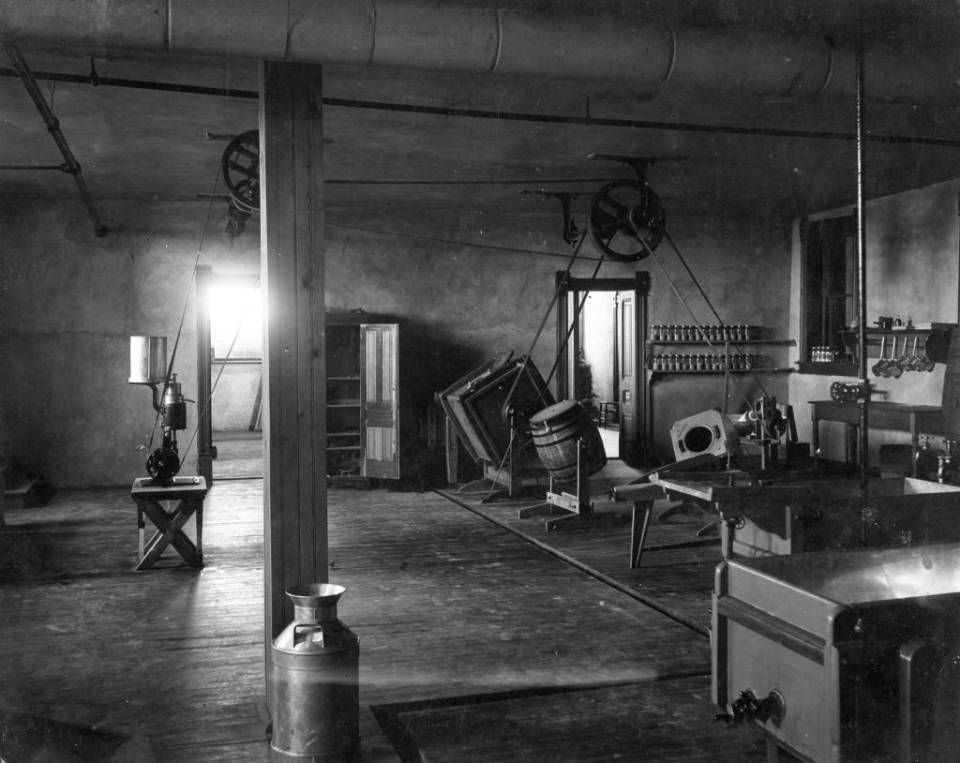
In The Animal Science Building
In 1919 the dairy production was moved to a new Animal Science Building (Brennan, 2000). The campus newspaper reported:
"Most of us have endured the nauseating perfumes of our basement dairy for so long that the idea or eventually riding ourselves of the nauseating perfumes has about become extinct. But it becomes a fact at last and next year we may hold chapel without the accompanying music of churns and separators and may eat our lunch without breaking thru a cloud of vile smelling atmosphere before entering the cafeteria." (Students of UAC, 1917)
After World War I and the invention of the freezer, Gustav Wilster joined USU’s faculty of dairy husbandry in 1921 (DeVilbiss, 2019). In January of 1922, Wilster would use the newly purchased dairy machinery to reopened the Aggie Ice Cream doors that had been closed since the 1919 influenza pandemic. Wilster’s passion for teaching would initiate a new focus on selling student-made ice cream to the student body and the public. This innovation would lead to landmark Utah companies such as Casper’s Ice Cream, Farr Better Ice Cream, and Snelgrove Ice Cream (McMahon, n.d.).
A.J. Morris—who had earned his bachelor’s degree in 1923 while studying under Prof. Wilster—joined the USU faculty in 1931 and was an inspiring teacher, researcher, and administrator for 31 years (Richardson, 2011). Prof. Morris continued the traditions of reaching out beyond the university by conducting annual ice cream short courses for people in the dairy industry (McMahon, n.d.). Sixty-six of Dr. Morris’s students completed advanced degree work and became known worldwide for their research and teaching accomplishments. Because of his expertise in dairy processing and sanitation A.J. lectured extensively throughout the country (Richardson, 2011).
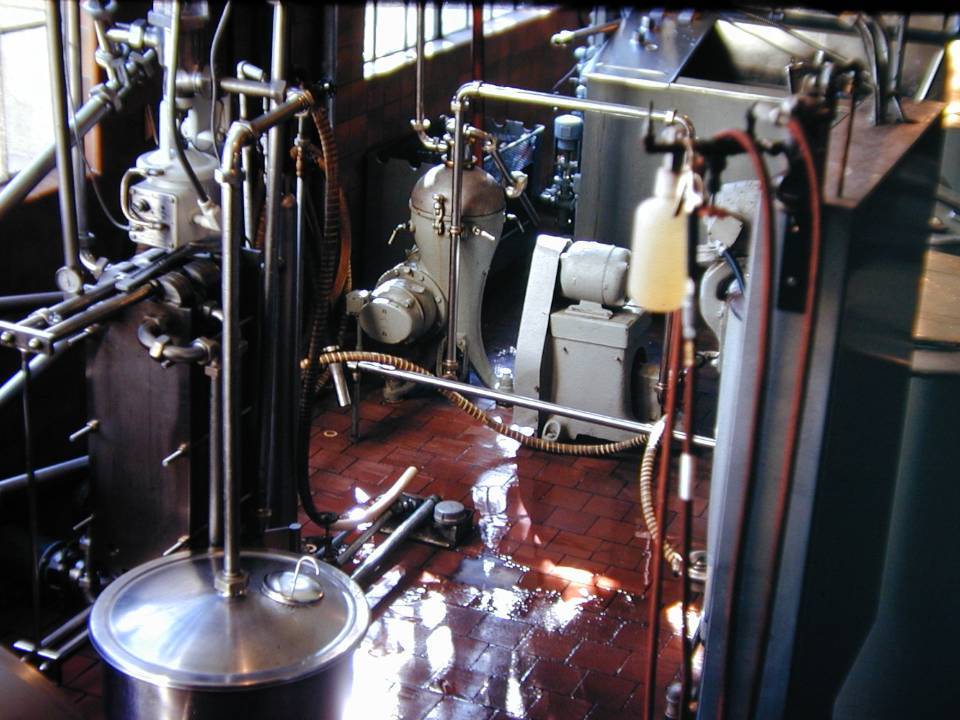
In 1952 USU began their annual dairy short courses where dairy food scientists would give lectures to students and community members as well as demonstration in the dairy lab (USU, 1952). The short courses continue to this day as beginner and advanced cheesemaking short courses. Thee courses have been taught to successful artisan and industry cheesemakers:
After Dr. Tony Ernstrom joined USU faculty he initiated the Biennial Cheese Conference at USU in 1974. This would later merge with activity in California to become the Global Cheese Technology Forum, a national program now hosted by the American Dairy Products Association that has been held in Reno, Nevada on a biennial basis (Bastian, 2023).
In The Nutrition and Food Science Building
When the Tony Ernstrom Nutrition and Food Sciences building was constructed in 1975 on the east edge of the university campus a new dairy processing facility and ice cream parlor was included. The consistently flooded floor and outdated equipment in the lab were replaced with a modern creamery in the new building to serve as a dairy processing laboratory, and dairy manufacturing became a bigger part of the Food Science curriculum (McMahon, n.d.; DeVilbiss, 2019).
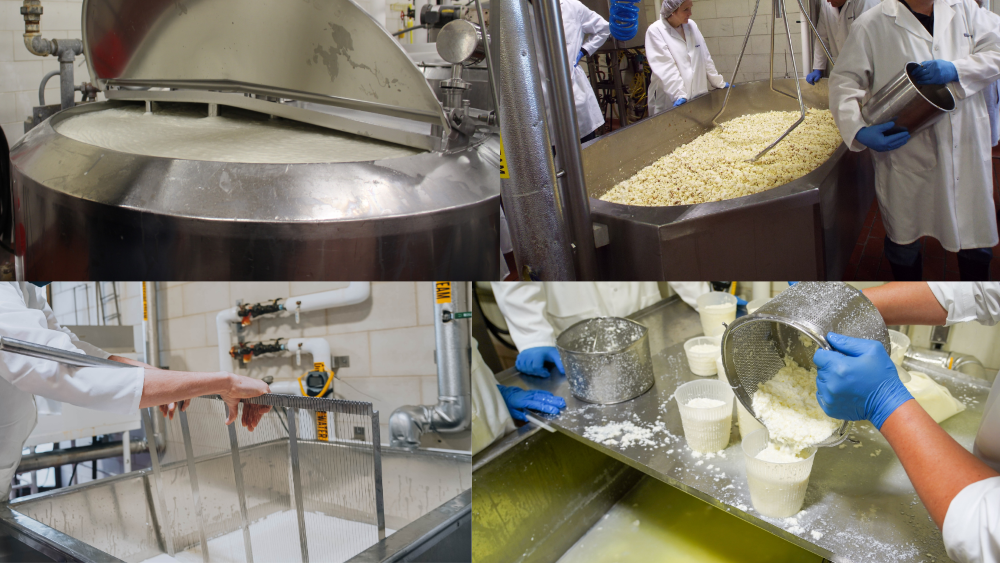
1976 saw Dr. C. Anthon Ernstrom establish Utah State University’s Dairy Research Advisory Board (DRAB) until it was replaced by the Western Dairy center (Rasmussen, 2008). This board focused on faculty-lead, student-assisted research to resolve problems in the manufacturing of dairy products.
The Creation Of The Western Dairy Center
In the early 1980’s, dairy farmers had been over-producing 17 billion pounds of milk. President Ronald Regan issued that the federal government purchase the excess milk as cheese and store it in hundreds of warehouses in 35 states, which was later given to Americans still recovering from the 70s recession (Blakemore, 2018).
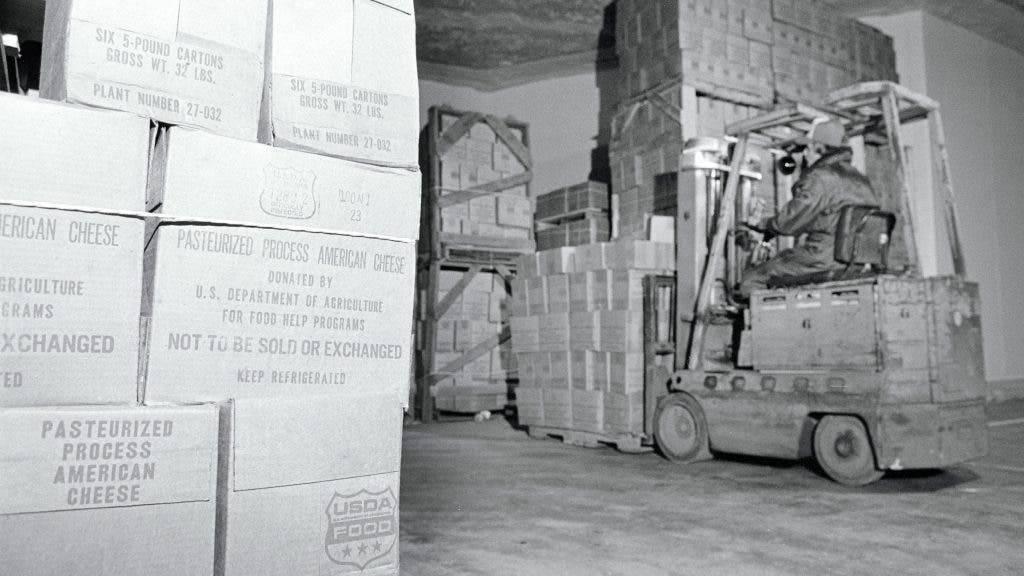
In order to support dairy industry jobs while keeping supply and demand in balance, the Dairy Stabilization act was passed in 1983 (Wikimedia, 2023). The Dairy Stabilization act, or the Dairy Checkoff, is a national program created by farmers for farmers to drive up sales, consumption, and trust. The Dairy checkoff collects 15 cent per 100 cwt of milk produced. This money funds dairy product promotion, research, and nutrition education (Midwest Dairy, 2023).
In 1987 the Western Dairy Center (WDC) was established in Logan Utah. It became one of six national dairy research centers funded by the National Dairy Promotion & Research Board (NDPRB), the board that manages the Dairy Checkoff. Initially, the WDC worked in conjunction with a three-way partnership between BYU, Oregon State, and Utah State (Rasmussen, 2008). The WDC pursues an ongoing mission to conduct basic and applied research in dairy products and ingredients and to transfer the resulting knowledge to the dairy industry in usable form. It is supported by the Dairy Research Institute, the NDPRB, the dairy industry, and local dairy farmer organizations (Scientist, 2023).

In the early 2000s there began to be a decline in the number of students coming out of the WDC and staying to work in the local dairy industry. University faculty and technically trained industry workers were getting close to retirement without sufficient workforce to replace them. Therefore, Don McMahon, the previous Western Dairy Center Director (2001-2021), with Eric Bastian, the current Western Dairy Center Director, developed the BUILD Dairy program.
A New Student-focused Approach
The BUILD Dairy Program is housed within and funded by the Western Dairy Center. BUILD Dairy has a network of professors, researchers, students, and dairy food industry companies and organizations in the western region. Its goal is to build university and industry linkages through learning and discovery. These linkages will encourage the increased value of dairy products manufactured in the region by building a broader network of technically trained, knowledgeable professionals and leaders that will foster the growth of the dairy food industry through innovation and discovery (Dairy West, 2019).

A key change initiated by the BUILD dairy program was a shift from faculty-lead to student-focused research in order to bring students into the dairy programs, involve them in research, and then prime them for the dairy industry (Dairy West, 2019).
Dr. McMahon said about the BUILD Dairy program:
"The thing about BUILD Dairy that I’m proud about is its focus on students. It funds student research at Utah State and within the region. Currently, one-to-two million dollars of external funding come into the program every year, which means new food science faculty members have support for their research programs that attract students, develop students’ knowledge and skills, and broaden our graduates’ career opportunities." (Leak, 2022)
Today the Western Dairy Center’s BUILD Dairy program is networked with Utah State University, Brigham Young University, Brigham Young University-Idaho, University of Utah, Boise State University, University of Idaho, Oregon State University, Washington State University, Weber State University, and numerous industry sponsors.
While companies and universities often work alone and compete with each other, the BUILD Dairy program strives to make connections of collaboration that benefit everyone in the dairy industry. The current manager of USU’s Aggie Ice Cream Bridgett Liberty said,
"We're all connected. You can't be in an agricultural business and not be connected. From the local farmers who grow the feed to the cows cared for on the farm to the business relationships we have with Gossner’s and other local plants, it's all connected." (Nehring & Harris, 2022)
The Future of BUILD Dairy, the Dairy Industry, and the Western Dairy Center
Since the USDA began tracking per capita dairy consumption in the 1970s, the trend in the dairy industry has continued upward for five straight decades, increasing 21% since 1975 (Jerome, 2020).
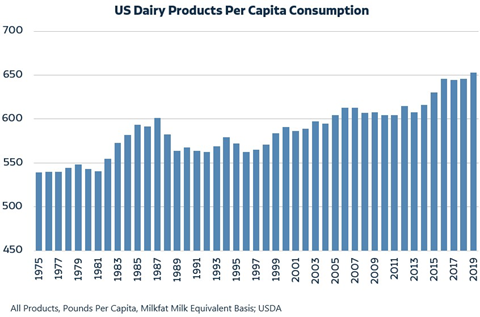
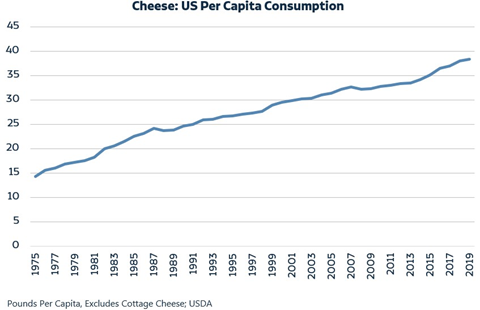
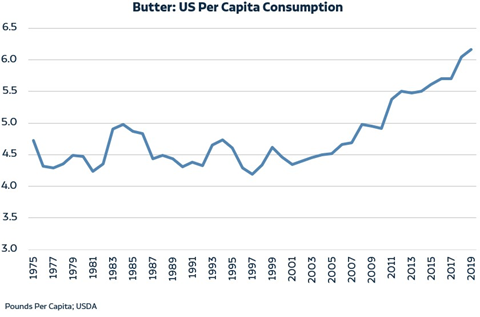
Cheese consumption in France is 63 lbs. per capita while the U.S. is consuming 38 lbs. per capita (Wallin & Erwine, 2019). Therefore, even though dairy consumption has been growing, the room for dairy cheese consumption alone —and thereby production in the U.S— has the capability to nearly double.
The Western Dairy Center will continue to grow and improve the dairy industry. We are dedicated to our most prestigious research all the way to our family-owned dairy farms. As the BUILD Dairy program has flourished, the number of graduate students has grown from five to over 50 (Dairy West, 2019). Dairy is a critical part of the global life and culture, and we are very pleased to be a key contributor in the dairy industry's sustainability.

